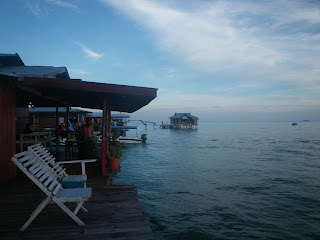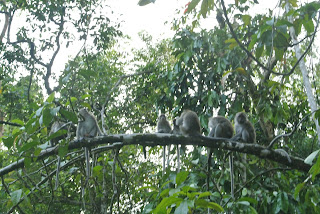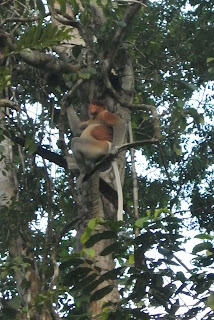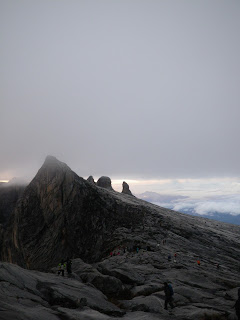Officially Burma is called the 'Republic of the Union of Myanmar' (pronounced MEanmar). This is the name reconised by the UN and is intended to be inclusive of the population, only 68% of whom are 'Bamar'.
Aung San Suu Kyi, daughter of a national hero and leader of the National League for Democracy (NDL) still calls it Burma, as do nearly all groups opposed to the government - and thats a lot. I also think 'Burma', like Bombay (Mumbai), Siam (Thailand) and Saigon (Ho Chi Mihn City) sounds nicer.
To date Burma holds the record as the longest running military dictatorship. From the 1960s to 2010 the government nationalised most of the country's industries and businesses, severely restricted internatinal trade, allowed only 24 hour tourist visas and controlled all media, isolating Burma from the rest of the world and runining the economy. In 1988 the government used extreme violence to put a stop to peaceful protest marches... and then called an election. Headed by Aung San Suu Kyi, the NDL won 82% of the assembly seats. The military simply refused to transfer power, threw elected officials into jail and beat protesters.
After the election in 2011, a quasi-civillian government was sworn in, Aung San Suu Kyi was released from house arrest after fifteen years and the tourism boycott that had existed for over a decade was lifted. Unfortunatley the former general and prime minister, was 'chosen' by elected officials to be the new President and as a result neither the US nor the EU fully dropped their sactions against Burma. Many people see the freedom, although restricted, of political prisoners as progress, others see it as no differnt from the past half century with over 2000 policial prisoners still in jail or under house arrest. Many still object to tourists visiting such a corrupt country, as so much of their money ends up in government hands. However, a section in the guide books lists the pros and cons of going: such as the creation of jobs and the welcome from locals who want to interact with the outside world; compared with the symbolic 'stamp of approal' tourism gives the government. However, the pros outweigh the cons, and there are numerous ways to ensure ones money goes where it is needed, rather than to the government.
One of the most devout Buddhist countries in the world, Burma has changed little since British colonial times. Most men and women still wear traditional skirt-like longyi, where as most of the rest of south east Asia has been overwhelmed by western clothing. Horse and cart is still used regularly and there are no 7/11's, McDonalds or international mobile signal.What little internet they have is very, very slow*. As I am getting fed up of all this anyway; car fumes, advertising, Coca-Cola and Dairy Milk everywhere, everyone speaking English and taking away the sense of adventure, I hope it is going to be the perfect way to end six months in Asia.
* So I might not be able to put too many posts online, but I will still write them and put them up in a couple of weeks.
Aung San Suu Kyi, daughter of a national hero and leader of the National League for Democracy (NDL) still calls it Burma, as do nearly all groups opposed to the government - and thats a lot. I also think 'Burma', like Bombay (Mumbai), Siam (Thailand) and Saigon (Ho Chi Mihn City) sounds nicer.
To date Burma holds the record as the longest running military dictatorship. From the 1960s to 2010 the government nationalised most of the country's industries and businesses, severely restricted internatinal trade, allowed only 24 hour tourist visas and controlled all media, isolating Burma from the rest of the world and runining the economy. In 1988 the government used extreme violence to put a stop to peaceful protest marches... and then called an election. Headed by Aung San Suu Kyi, the NDL won 82% of the assembly seats. The military simply refused to transfer power, threw elected officials into jail and beat protesters.
After the election in 2011, a quasi-civillian government was sworn in, Aung San Suu Kyi was released from house arrest after fifteen years and the tourism boycott that had existed for over a decade was lifted. Unfortunatley the former general and prime minister, was 'chosen' by elected officials to be the new President and as a result neither the US nor the EU fully dropped their sactions against Burma. Many people see the freedom, although restricted, of political prisoners as progress, others see it as no differnt from the past half century with over 2000 policial prisoners still in jail or under house arrest. Many still object to tourists visiting such a corrupt country, as so much of their money ends up in government hands. However, a section in the guide books lists the pros and cons of going: such as the creation of jobs and the welcome from locals who want to interact with the outside world; compared with the symbolic 'stamp of approal' tourism gives the government. However, the pros outweigh the cons, and there are numerous ways to ensure ones money goes where it is needed, rather than to the government.
One of the most devout Buddhist countries in the world, Burma has changed little since British colonial times. Most men and women still wear traditional skirt-like longyi, where as most of the rest of south east Asia has been overwhelmed by western clothing. Horse and cart is still used regularly and there are no 7/11's, McDonalds or international mobile signal.What little internet they have is very, very slow*. As I am getting fed up of all this anyway; car fumes, advertising, Coca-Cola and Dairy Milk everywhere, everyone speaking English and taking away the sense of adventure, I hope it is going to be the perfect way to end six months in Asia.
* So I might not be able to put too many posts online, but I will still write them and put them up in a couple of weeks.








































